2.4: Modern Art
- Page ID
- 226919
\( \newcommand{\vecs}[1]{\overset { \scriptstyle \rightharpoonup} {\mathbf{#1}} } \)
\( \newcommand{\vecd}[1]{\overset{-\!-\!\rightharpoonup}{\vphantom{a}\smash {#1}}} \)
\( \newcommand{\id}{\mathrm{id}}\) \( \newcommand{\Span}{\mathrm{span}}\)
( \newcommand{\kernel}{\mathrm{null}\,}\) \( \newcommand{\range}{\mathrm{range}\,}\)
\( \newcommand{\RealPart}{\mathrm{Re}}\) \( \newcommand{\ImaginaryPart}{\mathrm{Im}}\)
\( \newcommand{\Argument}{\mathrm{Arg}}\) \( \newcommand{\norm}[1]{\| #1 \|}\)
\( \newcommand{\inner}[2]{\langle #1, #2 \rangle}\)
\( \newcommand{\Span}{\mathrm{span}}\)
\( \newcommand{\id}{\mathrm{id}}\)
\( \newcommand{\Span}{\mathrm{span}}\)
\( \newcommand{\kernel}{\mathrm{null}\,}\)
\( \newcommand{\range}{\mathrm{range}\,}\)
\( \newcommand{\RealPart}{\mathrm{Re}}\)
\( \newcommand{\ImaginaryPart}{\mathrm{Im}}\)
\( \newcommand{\Argument}{\mathrm{Arg}}\)
\( \newcommand{\norm}[1]{\| #1 \|}\)
\( \newcommand{\inner}[2]{\langle #1, #2 \rangle}\)
\( \newcommand{\Span}{\mathrm{span}}\) \( \newcommand{\AA}{\unicode[.8,0]{x212B}}\)
\( \newcommand{\vectorA}[1]{\vec{#1}} % arrow\)
\( \newcommand{\vectorAt}[1]{\vec{\text{#1}}} % arrow\)
\( \newcommand{\vectorB}[1]{\overset { \scriptstyle \rightharpoonup} {\mathbf{#1}} } \)
\( \newcommand{\vectorC}[1]{\textbf{#1}} \)
\( \newcommand{\vectorD}[1]{\overrightarrow{#1}} \)
\( \newcommand{\vectorDt}[1]{\overrightarrow{\text{#1}}} \)
\( \newcommand{\vectE}[1]{\overset{-\!-\!\rightharpoonup}{\vphantom{a}\smash{\mathbf {#1}}}} \)
\( \newcommand{\vecs}[1]{\overset { \scriptstyle \rightharpoonup} {\mathbf{#1}} } \)
\( \newcommand{\vecd}[1]{\overset{-\!-\!\rightharpoonup}{\vphantom{a}\smash {#1}}} \)
DADA MOVEMENT
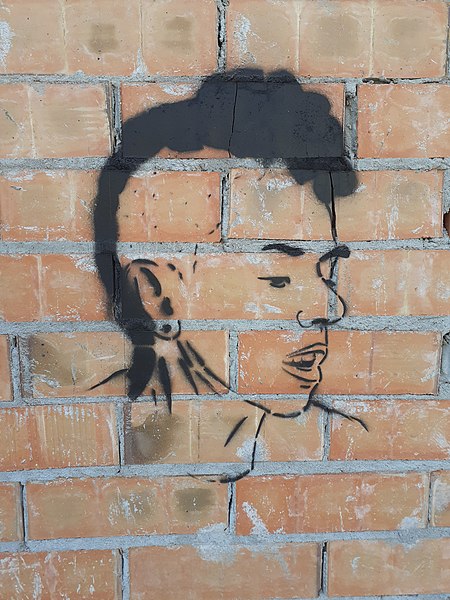
Image 2.6 Marcel Duchamp, Fountain, ready-made, replica of 1917 original, now lost, made in 1964. CC0.
Fountain was submitted to the Society of Independent Artists, one of the first venues for experimental art in the United States. It is a new form of art Duchamp called the “readymade”— a mass-produced or found object that the artist transformed into art by the operation of selection and naming. The readymades challenged the very idea of artistic production, and what constitutes art in a gallery or museum. Duchamp provoked his viewers—testing the the exhibition organizers’ liberal claim to accept all works with “no judge, no prize” without the conservative bias that made it difficult to exhibit modern art in most museums and galleries. Duchamp’s Fountain did more than test the validity of this claim: it prompted questions about what we mean by art altogether—and who gets to decide what art is.
Duchamp’s provocation characterized not only his art, but also the short-lived, enigmatic, and incredibly diverse transnational group of artists who constituted a movement known as Dada. These artists were so diverse that they could hardly be called a coherent group, and they themselves rejected the whole idea of an art movement. Instead, they proclaimed themselves an anti-movement in various journals, manifestos, poems, performances, and what would come to be known as artistic “gestures” such as Duchamp’s submission of Fountain.
Dada artists worked in a wide range of media, frequently using irreverent humor and wordplay to examine relationships between art and language and voice opposition to outdated and destructive social customs. Although it was a fleeting phenomenon, lasting only from about 1914-1918 (and coinciding with WWI), Dada succeeded in irrevocably changing the way we view art, opening it up to a variety of experimental media, themes, and practices that still inform art today. Duchamp’s idea of the readymade has been one of the most important legacies of Dada.
In a 1936 essay titled “The Work of Art in the Age of Mechanical Reproduction,” the German philosopher and cultural theorist, Walter Benjamin, proclaimed that the industrial age had changed everything about the way we view art. He believed that new technologies for mass production and media (such as photography) would invalidate the remnants of classical artistic traditions that were still being promoted by institutions such as art academies and museums.
Duchamp’s idea of the readymade, which he began exploring with works such as Bicycle Wheel and Bottle Rack as early as 1913, confronted these issues head on—subjecting the idea of art to intense scrutiny.

Image 2.7 Duchamp, “The Large Glass, detail with Bride" by profzucker is licensed under CC BY-NC-SA 2.0
Although Duchamp coined the term “readymade” and was the first to show mass produced objects as art, he drew inspiration from Braque, Picasso, and the other Cubists then working in Paris, who had already begun incorporating everyday items from mass culture (such as newspaper and wallpaper) into their abstracted collages.
Duchamp here notes several points of intervention by the artist that make even a “pure” readymade like Fountain different from an ordinary object:
(1) The readymade is chosen by the artist. Different objects have different associations and significance; an airplane propeller signifies something different than a high-heeled shoe. Readymades do not display an artist’s technical skill, but a work of art based on choosing an object, rather than representing one, does not necessarily sacrifice a capacity for meaningful communication.
(2) The readymade is divorced from its ordinary context and use value, and re-presented in an art world context. This encourages us to encounter the object in a different way. A urinal encountered in a men’s restroom is a simple matter of utilitarian fact; one encountered in a gallery becomes a focus for observation, cogitation, discussion, appreciation, and/or denunciation.
(3) The readymade is sometimes given an unexpected title. This also encourages us to think about the object anew: Why is Duchamp’s urinal entitled “fountain”? What do urinals have in common with fountains? How are they different? Why is a fountain suitable for public display (and a common site for sculptural decoration), while a urinal is not?
World War I begins in 1914, embroiling Europe in a cataclysmic conflict where the advancements of the modern industrial age are immediately shown to have devastating consequences. The war cuts short the innovations in modern art of the pre-war period with citizens from France, Belgium, Russia, Italy, England (and later America) fighting against the Germans and the Austrians (later joined by the Ottoman Empire). The war lasts until 1918. Because of the technological advancements of the modern era, the war was one of the deadliest in human history, resulting in over 15 million dead and millions more grievously injured.
The Dada movement is formed in Zurich in 1914 as a protest against the war. So intent were members of Dada on opposing all norms of bourgeois culture that the group was barely in favor of itself: "Dada is anti-Dada," they often cried. In Berlin, Dada circles are soon established in reaction against the ongoing political instability and militarism that was responsible for the war, while New York Dada takes a more light-hearted approach using humor and irony to critique art and society. Dada artists are known for their use of readymades - everyday objects that could be bought and presented as art with little manipulation by the artist. In all three places, Dada develops as against different things (or ‘anti’) including anti-aesthetic, anti-art, anti-reason, anti-logic, anti-authority, and anti-tradition as a means of forcing a critique upon commonly held ideas and values. Tied closely to Dada irreverence was their interest in humor, typically in the form of irony. Artists like Hans Arp were intent on incorporating chance into the creation of works of art. This went against all norms of traditional art production whereby a work was meticulously planned and completed. The introduction of chance was a way for Dadaists to challenge artistic norms and to question the role of the artist in the artistic process. YES to everything as art.
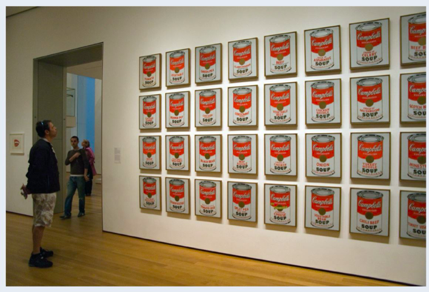
Image 2.8 'Portrait', Man Ray, France, 1937" by Nesster is licensed under CC BY 2.0
Remixed from:
Dada and Surrealism (I). 9 Mar. 2021, https://human.libretexts.org/@go/page/66932. CC BY-NC SA.
“Week 10 / April 3: DADA and De Stijl.” Introduction to the History of Modern Art, CUNY Academic Commons, 3 Jan. 2019, arh141.commons.gc.cuny.edu/week-10. CC BY-NC SA 4.0.
SURREALISM
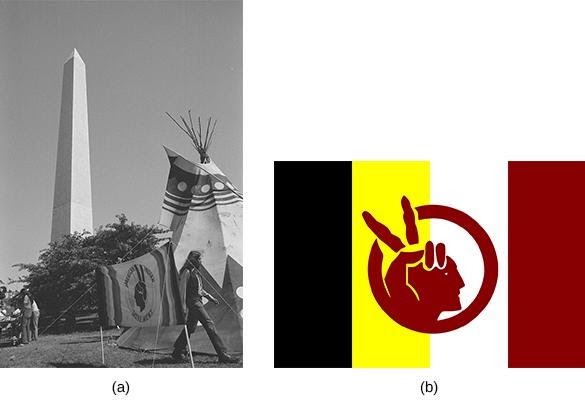
Image 2.9 Salvador Dali, "The Persistence of Memory" oil on Canvas. 1931. http://www.wikigallery.org/ CC0.
Surrealism is one of the most creative and influential art and literature movements of the 20th Century. Surrealism grew out of the Dada movement, which was also in rebellion against middle-class complacency. Surrealists sought to unlock the power of the unconscious mind in a rebellion against logic, morals and the values of the bourgeois and political establishments of the 1920s and ‘30s. A further development of Collage, Cubism, and Dada, this 20th-century movement stresses the weird, the fantastic, and the dreamworld of the subconscious. Certain general concepts associated with psychoanalysis are useful for considering Surrealist art. The most important of these is the notion of the unconscious as a repository for thoughts and feelings that are generally unavailable to consciousness. Freud considered dreams to be coded expressions of unconscious fears, desires, and conflicts that could be deciphered and potentially resolved through analysis.
Historians typically introduce Surrealism as an offshoot of Dada (Dada was an art movement of the early twentieth century that emerged in Europe and New York in response to the horrors of World War I—which killed an estimated 16 million people). In the early 1920s, writers such as André Breton and Louis Aragon became involved with Parisian Dada. Although they shared the group’s interest in anarchy and revolution, they felt Dada lacked clear direction for political action. So in late 1922, this growing group of radicals left Dada, and began looking to the mind as a source of social liberation. Influenced by French psychology and the work of Sigmund Freud, they experimented with practices that allowed them to explore subconscious thought and identity and bypass restrictions placed on people by social convention. For example, societal norms mandate that suddenly screaming expletives at a group of strangers—unprovoked, is completely unacceptable.
The exquisite corpse is a technique (The name derives from the French term cadavre exquis and means rotating body), developed from a writing game the Surrealists created. First, a piece of paper is folded as many times as there are players. Each player takes one side of the folded sheet and, starting from the top, draws the head of a body, continuing the lines at the bottom of their fold to the other side of the fold, then handing that blank folded side to the next person to continue drawing the figure. Once everyone has drawn her or his “part” of the body, the last person unfolds the sheet to reveal a strange composite creature, made of unrelated forms that are now merged. A Surrealist Frankenstein’s monster, of sorts.
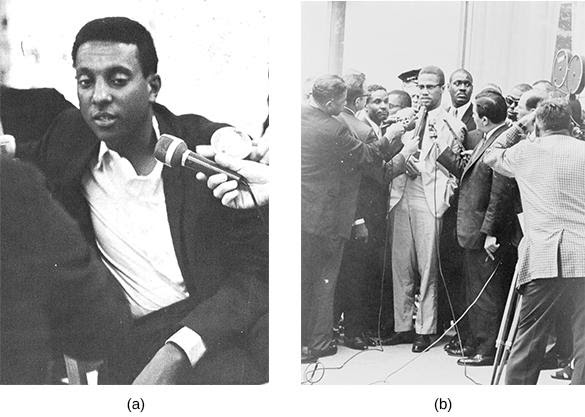
Image 2.10 Example of ‘exquisite corpse’ drawing by DIYLILCNC ink on paper, CC BY SA.
Surrealism is a broad style in painting, sculpture, photography, film and fashion. For our purposes, it can be organized into two main areas. Each area uses the power of dreams, memories and the unconscious mind to explore different attitudes, states of being and experiences, with the difference between these two areas of Surrealism being in the type of images and the techniques used to make art.
THE SURREALIST EXPERIENCE
Today, we tend to think of Surrealism primarily as a visual arts movement, but the group’s activity stemmed from much larger aspirations. By teaching how to circumvent restrictions that society imposed, the Surrealists saw themselves as agents of social change. The desire for revolution was such a central tenet that through much of the late 1920s, the Surrealists attempted to ally their cause with the French Communist party, seeking to be the artistic and cultural arm. Unsurprisingly, the incompatibility of the two groups prevented any alliance, but the Surrealists’ effort speaks to their political goals.
In its purest form, Surrealism was a way of life. Members advocated becoming flâneurs–urban explorers who traversed cities without plan or intent, and they sought moments of objective chance—seemingly random encounters actually fraught with import and meaning. They disrupted cultural norms with shocking actions, such as verbally assaulting priests in the street. They sought in their lives what Breton dubbed surreality, where one’s internal reality merged with the external reality we all share. Such experiences, which could be represented by a painting, photograph, or sculpture, are the true core of Surrealism.

Image 2.11 Homage to Newton, a surrealist sculpture by Salvador Dali - 1985. CC0.
Remixed from:
Rose, John. “Surrealism, an Introduction. (Article).” Khan Academy, Khan Academy,https://www.khanacademy.org/humanities/art-1010/dada-and surrealism/xdc974a79:surrealism/a/surrealism-an-introduction. Accessed 6 May 2021. CC BY-NC-SA 3.0 US.
“Week 11 / April 10: Surrealism.” Introduction to the History of Modern Art, CUNY Academic Commons, 3 Jan. 2019, arh141.commons.gc.cuny.edu/week-11. CC BY-NC SA 4.0.
FRIDA KAHLO
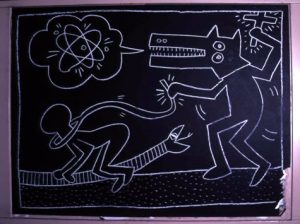
Image 2.12 Frida Kahlo, The Two Fridas (Las dos Fridas), 1939, oil on canvas, 67-11/16 x 67-11/16" (Museo de Arte Moderno, Mexico City) CC0.
Sixty, more than a third, of the easel paintings known by Frida Kahlo are self-portraits. This huge number demonstrates the importance of this genre to her artistic oeuvre. The Two Fridas, like Self-Portrait With Cropped Hair, captures the artist’s turmoil after her 1939 divorce from the artist Diego Rivera. At the same time, issues of identity surface in both works. The Two Fridas speaks to cultural ambivalence and refers to her ancestral heritage. Self-Portrait With Cropped Hair suggests Kahlo’s interest in gender and sexuality as fluid concepts.

Image 2.13 Frida Kahlo, Self-Portrait with Cropped Hair, 1940, oil on canvas, 40 x 27.9 cm (Banco de México Diego Rivera Frida Kahlo Museums Trust, Mexico City) CC0.
Kahlo was famously known for her tumultuous marriage with Rivera, whom she wed in 1929 and remarried in 1941. The daughter of a German immigrant (of Hungarian descent) and a Mexican mother, Kahlo suffered from numerous medical setbacks including polio, which she contracted at the age of six, partial immobility—the result of a bus accident in 1925, and her several miscarriages. Kahlo began to paint largely in response to her accident and her limited mobility, taking on her own identity and her struggles as sources for her art. Despite the personal nature of her content, Kahlo's painting is always informed by her sophisticated understanding of art history, of Mexican culture, its politics, and its patriarchy.
THE TWO FRIDAS
Exhibited in 1940 at the International Surrealist Exhibition, The Two Fridas depicts a large-scale, double portrait of Kahlo, rare for the artist, since most of her canvases were small, reminiscent of colonial retablos, small devotional paintings. To the right Kahlo appears dressed in traditional Tehuana attire, different from the nineteenth century wedding dress she wears at left and similar to the one worn by her mother in My Grandparents, My Parents, and I (Family Tree) (1936).

Image 2.14 Frida Kahlo, My Grandparents, My Parents, and I (Family Tree), 1936, oil and tempera on zinc, 30.7 x 34.5 cm (Banco de México Diego Rivera Frida Kahlo Museums Trust, Mexico City) CC0.
Whereas the white dress references the Euro-Mexican culture she was brought up in, in which women are “feminine” and fragile, the Tehuana dress evokes the opposite, a powerful figure within an indigenous culture described by some at the time as a matriarchy. This cultural contrast speaks to the larger issue of how adopting the distinctive costume of the indigenous people of Tehuantepec, known as the Tehuana, was considered not only “a gesture of nationalist cultural solidarity,” but also a reference to the gender stereotype of “la india bonita.” [1]
Against the backdrop of post-revolutionary Mexico, when debates about indigenismo (the ideology that upheld the Indian as an important marker of national identity) and mestizaje (the racial mixing that occurred as a result of the colonization of the Spanish-speaking Americas) were at stake, Kahlo’s work can be understood on both a national and personal level. While the Tehuana costume allowed for Kahlo to hide her misshapen body and right leg, a consequence of polio and the accident, it was also the attire most favored by Rivera, the man whose portrait the Tehuana Kahlo holds. Without Rivera, the Europeanized Kahlo not only bleeds to death, but her heart remains broken, both literally and metaphorically.
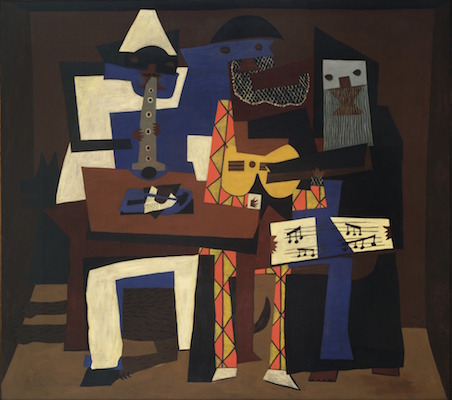
Image 2.15 Frida Kahlo, detail with hemostat, The Two Fridas (Las dos Fridas), 1939, oil on canvas, 67-11/16 x 67-11/16″ (Museo de Arte Moderno, Mexico City) (photo: Dave Cooksey, CC: BY-NC-SA 4.0)
“I AM THE PERSON I KNOW BEST”
Photographs by artists within her milieu, like Manuel Alvarez Bravo and Imogen Cunningham, confirm that Kahlo's self portraits were largely accurate and that she avoided embellishing her features. The solitude produced by frequent bed rest—stemming from polio, her near-fatal bus accident, and a lifetime of operations—was one of the cruel constants in Kahlo’s life. Indeed, numerous photographs feature Kahlo in bed, often painting despite restraints. Beginning in her youth, in order to cope with these long periods of recovery, Kahlo became a painter. Nevertheless, the isolation caused by her health problems was always present. She reflected, “I paint self-portraits because I am so often alone, because I am the person I know best.”
In opposition, the painting Self-Portrait With Cropped Hair boldly denounces the femininity of Two Fridas. In removing her iconic Tehuana dress, in favor of an oversized men’s suit, and in cutting off her braids in favor of a crew cut, Kahlo takes on the appearance of none other than Rivera himself. At the top of the canvas, Kahlo incorporates lyrics from a popular song, which read, “Look, if I loved you it was because of your hair. Now that you are without hair, I don't love you anymore.” In weaving personal and popular references, Kahlo creates multilayered self-portraits that while rooted in reality, as she so adamantly argued, nevertheless provoke the surrealist imagination. This can be seen in the visual disjunctions she employs such as the floating braids in Self Portrait with Cropped Hair and the severed artery in Two Fridas. As Kahlo asserted to Surrealist writer André Breton, she was simply painting her own reality.
Remixed from:
Dr. Maya Jiménez, "Frida Kahlo, introduction," in Smarthistory, October 31, 2019, accessed May 24, 2021, https://smarthistory.org/frida-kahlo-introduction/.CC BY-NC SA 4.0.

